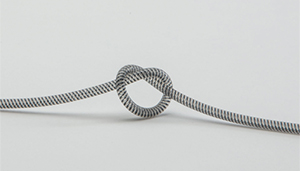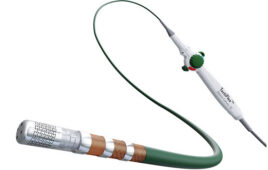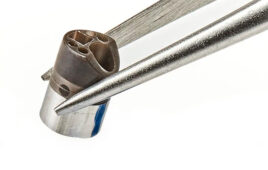Today’s implantable medical devices require bio-friendly silicone that keeps fluids flowing even when space is tight.
Dan Sanchez, Trelleborg Sealing Solutions
Combining highly biocompatible silicone with the elasticity and durability of nylon creates a class of durable, crush- and kink-resistant tubing that’s ideal for today’s small yet highly complex medical devices.
That’s because small is the name of the game when it comes to today’s implantable medical devices, and tubing has to shrink to fit them. The challenge is that silicone – the most biocompatible, durable and flexible material for tubing – tends to kink when produced in small sizes.
The solution is reinforced tubing, which allows significant reduction of the bend radius of small silicone tubes. This opens up design possibilities for long-term implantable devices, drainage tubes and tubes that resist collapse under higher vacuum pressures.
What is kink-resistant tubing (KRT), and how is it used in medical settings?
In the medical world, silicone tubes are made kink-resistant by reinforcing them with nylon 66 monofilaments in a double-helix configuration. The monofilaments are embedded within the wall of the tube, adding radial strength and reducing the likelihood the tube will compress or kink.
KRT is ideal for long-term implantable devices, allowing fluid to flow from the device into the body regardless of bodily movement. The tube will stay open even when the body moves and muscles flex, keeping fluid transfer consistent in all positions.
The tubing is also very useful in implantable devices involving electrical connections, such as pacemakers. The wires that carry the electrical impulses can be safely placed inside the reinforced tube with no concern that the tube will become compressed at the point of connection with the device.
Tubes that deliver fluids such as drugs into the body – or remove them from the body (blood, spinal fluids, urine) – can also benefit from reinforcement. For example, cerebral spinal-fluid shunt systems involve a tube that must go straight into the skull but take a sharp turn after leaving the body. Reinforcement can ensure consistent fluid flow and improve the surgeon’s ability to push the tube into the cranial opening.
Finally, reinforced tubes are an excellent choice for wound drainage involving a vacuum (negative-pressure wound therapy). The same nylon configuration that creates kink resistance makes silicone tubes resistant to collapsing under pressure.
What design considerations are relevant to KRT?
There are four main concerns when considering KRT in a small medical device:
1. Silicone is highly biocompatible, but the nylon used in KRT is not. In some instances, the manufacturer may need to prove that the reinforcement will not come into contact with the body in order for the tubing to be used.
2. The nylon monofilaments used to create KRT are encapsulated in the silicone walls but not chemically bonded to them. Thus, if the tube is unattached at one end, that end may need to be sealed (using a secondary process) to ensure the relatively sharp ends of the monofilaments don’t come into contact with the body.
3. Nylon can degrade when exposed to high heat, so KRT is not an option for devices that will be subjected to an autoclave or used during ablation procedures.
4. The potential length of reinforced silicone tubing depends in part on its diameter. Current technology allows reinforced silicone tubes to be produced in sizes from 1⁄16 in. to 1/8 in. inner diameter. The tube wall must be built on a mandrel while the nylon spiral is being created, after which the mandrel can be removed. This step is difficult for long tubes, particularly those with large inner diameters. The surface area’s contact with the silicone enlarges significantly as the mandrel increases in size, increasing friction and the difficulty involved in removing the mandrel.
Combining highly biocompatible silicone with the elasticity and durability of nylon creates a class of durable, crush resistant, kink resistant tubing that is ideal for today’s small yet highly complex medical devices.
Dan Sanchez is a product manager forTrelleborg Sealing Solutions – with 19 years of experience in silicone component manufacturing for the healthcare and medical industry, specializing in process development of silicone extrusions.





